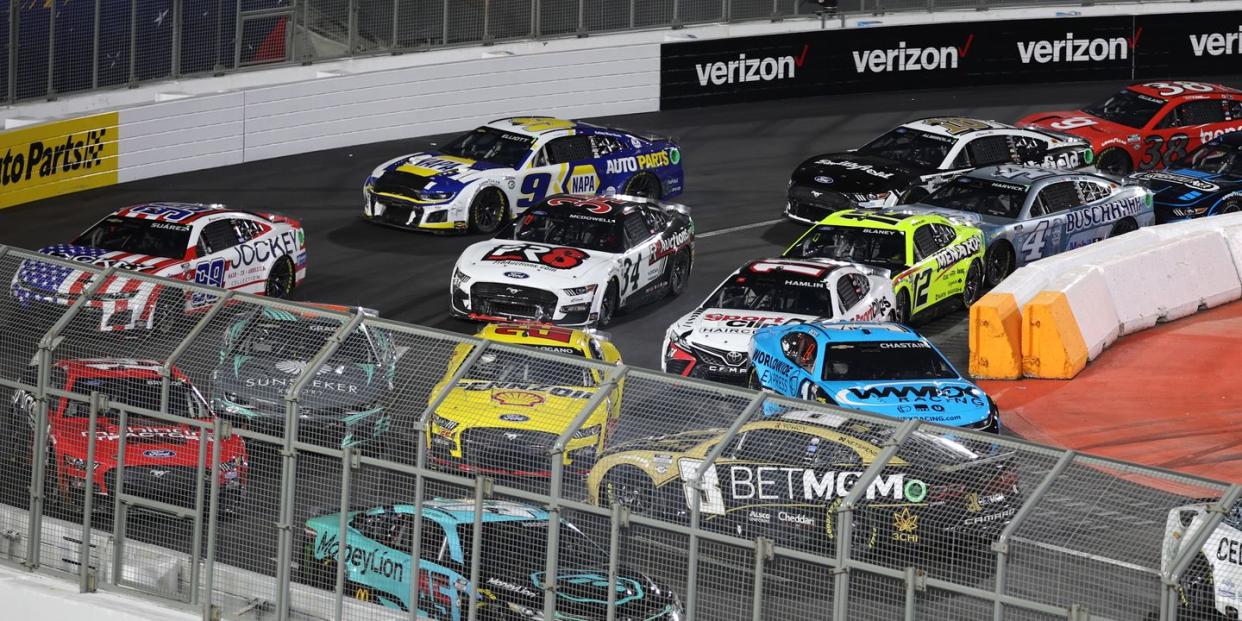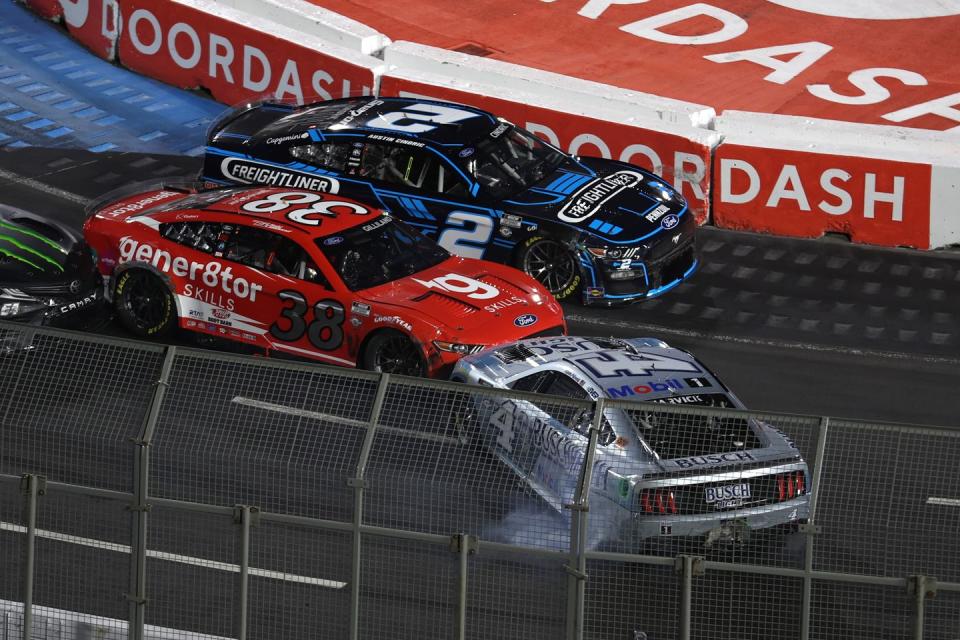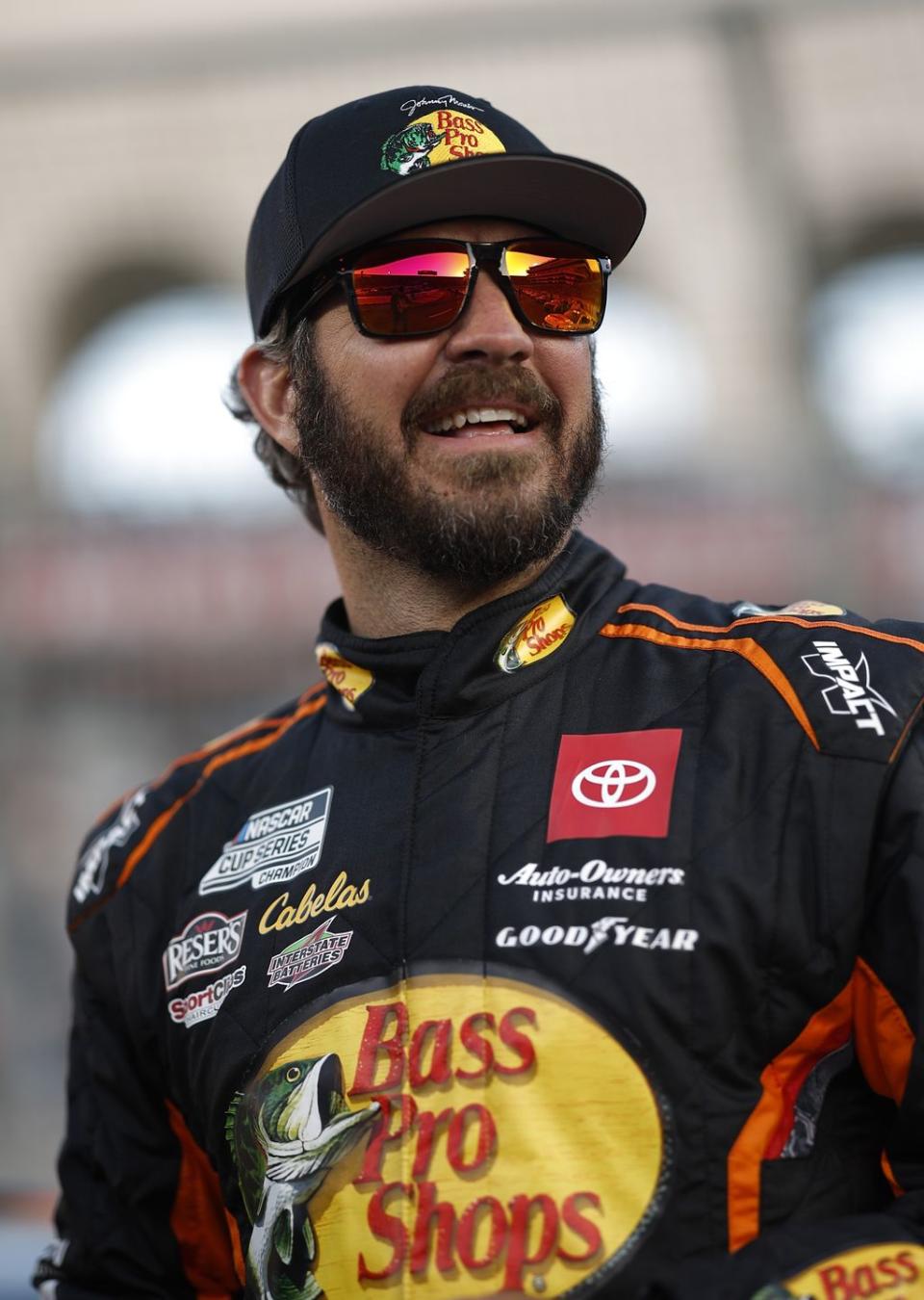NASCAR Clash at Coliseum: Winning Average Speed 21.831 mph; More Violent than First

- Oops!Something went wrong.Please try again later.
- Oops!Something went wrong.Please try again later.
This year there were 16 caution flags, including the one for the halfway break.
There also was a brief red flag for track cleanup following a multi-car accident.
Last year there were five yellow flags.
The average speed of this year's race winner was 21.831 mph.
A year’s worth of knowledge regarding NASCAR’s current Cup car instilled more confidence in the drivers about their equipment and that resulted in a rougher, more “violent” Busch Light Clash than the one a year ago at the Los Angeles Memorial Coliseum.
Last year when the car made its debut, there was a shortage of several parts needed to assemble it because of supply chain issues. Also, the drivers were tentative about the strength of the car’s nose and rear bumpers as well as how it would react on the newly created quarter-mile track. However, that wasn’t the case this year.
“This year it was just like everybody just ran through the person in front of them,” fifth-place finisher Kyle Larson said. “If you got a hole to get down … then the three or four cars behind would just shove them through the two in front of them. A lot of accordion (effect).”
Third-place finisher Kyle Busch said when he spun on lap 86 after getting hit by Joey Logano the accordion effect wasn’t involved.

“He just flat out drove through me, so he’s got another one coming,” Busch said. “I owe him a few.”
Second-place finisher Austin Dillon noted that in the race’s first 30 laps his head was against his seat’s head rest “probably every lap.”
“It was just bang, bang, back and forth, every corner,” Dillon said. “I couldn’t believe how aggressive it was the first run. There was nothing but just hammer each other and hope to come out the other side.”
Dillon said he was hit one time near the end of the race and the impact knocked the steering wheel out of his hands.
Even though caution laps didn’t count in the 150-lap, non-points race, the number of yellow flags were kept in the statistical record. This year there were 16, including the one for the halfway break. There also was a brief red flag for track cleanup following a multi-car accident. Last year there were five yellow flags.
“Last year’s show I felt like was relatively clean and good racing, some bumping, some banging, but we could run long stretches of green flag action, where today (Sunday) … I would call it a disaster with the disrespect from everybody of just driving through each other and not just letting everything kind of work its way out,” Busch said.
“Actually, this is probably how it should have gone last year, so we got spoiled with a good show the first year.”

Busch Light Clash winner Martin Truex Jr. said the “beating and banging” reminded him of his Busch North Series days where 150-lap races were the norm.
“Not really taking each other out, just running hard, rubbing a lot, and kind of getting out of shape,” Truex said.
However, the New Jersey native said with a chuckle that he didn’t remember any races in the Busch North Series taking as long to complete as the 37.5-mile Busch Light Clash—1 hour 43 minutes 4 seconds. Translation: 21.831 mph average speed.
“That felt like a 400-mile race,” Truex said. “It was forever and ever, caution, caution, caution.”
Still, Truex described the event as “a ton of fun” when “you’re not getting spun around.”
“When you’re up front and you’re just kind of banging and beating and guys are sliding into the corner, making mistakes and all that, that’s fun,” Truex explained. “It’s no fun when you just get run over and turned around, which I feel like is a lot of what was going on with all the cautions.”
Dillon equated the racing to that found weekly at Bowman Gray Stadium in Winston-Salem, N.C. That quarter-mile, flat track in the football stadium used by Winston-Salem State University was made famous in the 2010 History Channel’s reality TV series MadHouse.
Despite NASCAR’s changes in the car’s rear to make it softer on impact, Larson was one of those who felt the hits he received were still hard.
“I only had like one moment last year that I remember where it was like, wow, like that was a hard hit,” Larson said. “This was like every restart you would check up with the guy in front of you and just get clobbered from behind you and your head whipping around and slamming off the back of the seat.
“I don’t have a headache, but I could see how if others do, it’s no surprise because it was very violent for the majority of the race. We had so many restarts … every restart you’re getting just clobbered and then you’re clobbering the guy in front of you. You feel it a lot.”
Larson noted the style of racing in this year’s Clash wouldn’t have occurred with the old car because they weren’t as strong. Busch said that with the former car no one would have a radiator left and half the field would be parked in the infield, something that might not be bad because it would “get some of those squirrels out of there.”
Even though the two-mile Auto Club Speedway won’t be on the 2024 schedule due to its reconfiguration the drivers were emphatic that the Coliseum exhibition event should not be turned into a points race.
“It’s such a great event,” Truex said about the Clash. “Why would you want to screw it up and make it a points race? It’s like a one-off deal, the Clash.”
Truex said the Clash “got all weird” with its different formats over the last four decades, but “now this is really cool.”
“It’s got its own identity, fun race, all the way out here in a cool venue that’s got a lot of history,” Truex continued. “I think it’s kind of got a good vibe to it now. Let’s not maybe screw that up.”

